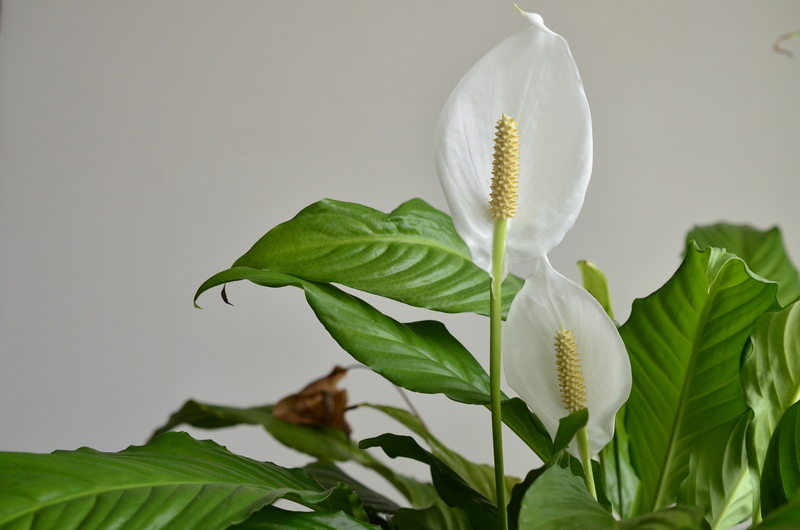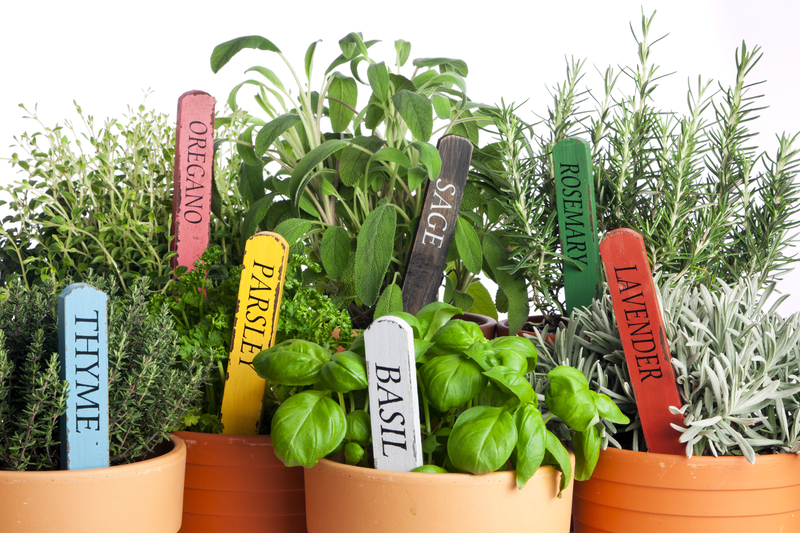Craft the Perfect Garden with Indispensable Tools
Posted on 18/08/2025
Craft the Perfect Garden with Indispensable Tools
Welcome to your gateway for transforming outdoor spaces! Crafting the perfect garden with indispensable tools is a dream for green thumbs and beginners alike. The right gardening tools do far more than simplify tasks--they enable precision, nurture plant health, and bring your vision to life. Whether you're tending a cozy balcony or sprawling backyard, having essential garden tools at your disposal makes all the difference.

Why the Right Tools Matter in Gardening
Gardening is both an art and a science. A well-tended garden offers benefits like stress relief, improved air quality, and fresh organic produce. However, every masterpiece starts with the proper instruments. When you choose the right gardening tools, you make every action more efficient, precise, and enjoyable. From weeding and hoeing to pruning and cultivating, the right implements elevate your gardening experience, reduce physical strain, and help avoid plant damage.
Essential Gardening Tools for Beginners and Experts
To create your perfect garden, you need tools that address every aspect of gardening--from soil preparation and planting to maintenance and harvesting. Below, we've organized the best garden tools you'll need, along with expert tips on how to select, use, and care for them.
1. Hand Trowel
Arguably the most-used tool in a gardener's arsenal, the hand trowel is perfect for digging, planting, and moving soil or compost. Its ergonomic handle provides comfort, while the sturdy blade effortlessly cuts through toughest soils. Look for stainless steel options for durability and easy cleaning.
- Uses: Transplanting seedlings, digging small holes, weeding, mixing fertilizer
- Tips: Choose a hand trowel with a broad blade for scooping and a narrow one for digging out stubborn weeds.
2. Pruning Shears (Secateurs)
A pair of pruning shears is essential for trimming flowers, shaping shrubs, and cutting back plants for better growth. High-quality, sharp blades avoid crushing stems, leaving cleaner cuts to reduce disease risks.
- Uses: Pruning, deadheading, harvesting herbs
- Tips: Bypass shears (scissor action) are ideal for live plants, while anvil shears suit dry, woody stems.
3. Garden Gloves
Protecting your hands while working in the garden cannot be understated. Good garden gloves shield you from blisters, thorny stems, and harmful chemicals, while ensuring excellent grip and dexterity.
- Uses: All planting and weeding tasks, handling prickly branches, mixing soil amendments
- Tips: Opt for water-resistant gloves with reinforced fingertips and breathable fabric for all-day comfort.
4. Spade
The classic garden spade features a flat, square blade that slices through soil, roots, and sod with ease. It's indispensable for larger planting and earth-moving jobs.
- Uses: Digging planting holes, edging beds, transplanting, lifting sod
- Tips: Choose a spade with a comfortable, D-shaped handle for better leverage and reduced back strain.
5. Garden Fork
When you need to aerate soil, break up clumps, or work with tough roots, the garden fork is your best friend. The multi-pronged head penetrates dense ground where a spade can't.
- Uses: Aerating soil, turning compost, sifting stones, mixing amendments
- Tips: Look for sturdy, forged steel tines that won't bend or break under pressure.
6. Watering Can or Hose
Proper hydration is key to a thriving garden. A watering can is perfect for precision watering, while hoses with adjustable nozzles suit larger spaces.
- Uses: Watering delicate seedlings and established beds
- Tips: Pick a lightweight, balanced can or a hose with a comfortable grip and adjustable spray patterns.
7. Garden Hoe
For weeding, shaping soil, and prepping beds, a garden hoe is indispensable. Whether you prefer the traditional draw hoe or a stirrup (action) hoe, it allows for quick weed removal and soil cultivation.
- Uses: Clearing weeds, breaking up surface crusts, mixing fertilizers into soil
- Tips: Sharp blades make for easier work; handles should be lightweight yet robust.
8. Wheelbarrow or Garden Cart
Transporting heavy soil, compost, or garden debris is much easier with a wheelbarrow or garden cart. It reduces physical strain and saves time, especially in large gardens.
- Uses: Hauling soil, mulch, tools, and plants around the garden
- Tips: Look for rust-proof bins and pneumatic tires for easy maneuvering over uneven ground.
9. Rake
A garden rake isn't just for fall leaves--it's essential in preparing seedbeds, smoothing soils, and cleaning up debris. Various rakes (fan, bow, or landscape) cater to specific tasks.
- Uses: Leveling and smoothing soil, gathering leaves, spreading mulch
- Tips: Adjustable rakes offer both wide and narrow spreads for different jobs.
10. Plant Labels and Markers
Staying organized is vital for a successful garden. Plant markers help you remember where you planted which seeds or plants and track their progress.
- Uses: Labeling seedlings, recording planting dates, noting plant varieties
- Tips: UV-resistant markers and waterproof pens guarantee the labels last all season.
Additional Must-Have Garden Gadgets
While the classic hand tools remain indispensable, modern gardeners benefit from innovative devices that make caring for a garden even easier and more precise.
- Soil Tester: Measures pH, moisture, and nutrient levels to optimize plant health
- Drip Irrigation Kit: Automates watering, saving time and reducing waste
- Compost Bin: Turns organic waste into rich fertilizer with minimal effort
- Garden Kneeler: Provides comfort and protects knees during prolonged work
Choosing Quality Garden Equipment
When it comes to crafting the perfect garden with the right tools, quality should always take precedence over quantity. Here's what to consider for long-lasting, effective garden tool investments:
- Material: Stainless steel resists corrosion and stays sharper longer than aluminum or plastic.
- Ergonomics: Soft-grip handles, balanced weight, and anti-fatigue designs preserve comfort.
- Craftsmanship: Forged or welded tools last longer than those held together by rivets or glue.
- Maintenance: Easy-to-clean tools help you maintain hygiene and prevent disease transfer.
Pro tip: Always test the weight and feel of any gardening tool before purchase. A tool should feel balanced and comfortable in your hand, reducing fatigue during extended use.
How to Care for Your Gardening Tools
Even the most indispensable gardening tools require proper maintenance to serve you for years. Follow these simple care steps:
- Clean after each use: Remove soil and sap with water and a wire brush or sponge.
- Dry thoroughly: Prevent rust by wiping down metal parts and letting tools air dry.
- Sharpen blades: Use a whetstone or file to keep edges keen on shears, spades, and hoes.
- Oil moving parts: Lubricate hinges and metal surfaces periodically to avoid corrosion and sticking.
- Store properly: Hang tools in a dry shed or garage, preferably off the ground, to maintain longevity.
Craft the Perfect Garden Step-by-Step
Step 1: Plan Your Layout
Start by sketching your garden design or using an online planner. Identify sunny and shady areas, choose plant varieties suited to your climate, and decide where paths, beds, and focal points will go.
Step 2: Prepare Your Soil
Healthy soil is the backbone of gardening success. Use a spade, fork, and rake to aerate, amend, and level the earth. Test soil pH and nutrients to adjust for optimal growing conditions.
Step 3: Plant and Mulch
Plant seeds or transplants using your trowel. Ensure each variety gets proper spacing and depth. Finish with mulch to conserve moisture, suppress weeds, and foster robust growth.
Step 4: Water and Feed
Regular watering is vital, best done with a watering can or hose. Use drip irrigation for automated and efficient hydration. Fertilize as necessary using a watering can for liquid feeds or a rake to spread granular fertilizers.
Step 5: Maintain and Monitor
Tend to your garden with pruning shears, hoe, and fork as needed. Regular weeding, pruning, and soil aeration keep your plants healthy and productive. Mark growing plants with labels and keep a garden journal to track progress or issues.
Environmental Benefits of Smart Gardening Tools
When you invest in the right environmentally friendly gardening tools, you help reduce waste, conserve water, and minimize the need for chemicals. Tools such as compost bins and soaker hoses foster sustainability, while strong, long-lasting equipment reduces the need for frequent replacements.

Expert Tips for Maximizing Garden Tool Efficiency
- Rotate your tools seasonally: Store unused items clean and dry between seasons to extend their life.
- Keep blades sharp: Slicing through tough roots or branches is not only easier but also healthier for your plants.
- Personalize your toolkit: Add color-coded handles or unique markers to avoid losing or confusing your tools.
- Invest in tool maintenance: A quick scrub and oiling after each use pays off with years of reliable service.
Conclusion: Craft the Garden of Your Dreams with the Right Tools
To craft the perfect garden with indispensable tools, it's not just about having the most items, but about selecting the best garden gadgets and equipment tailored to your needs. Whether you're nurturing delicate flowers or cultivating vegetables, quality tools are the foundation of productive, enjoyable gardening. Choose wisely, keep them well maintained, and let your dream garden flourish season after season!
Start your gardening journey today--outfit yourself with these essential, reliable tools, and transform any patch of earth into a flourishing oasis!



